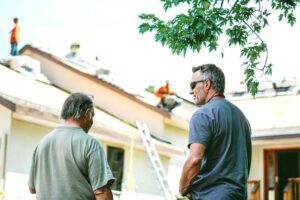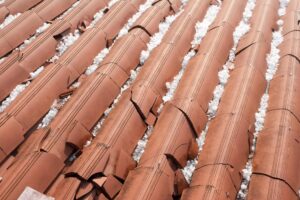The Ultimate Guide to Hail Damage Repair
Hailstorms can strike unexpectedly, leaving behind significant damage to vehicles, roofs, and property. If you’ve recently experienced a hailstorm, understanding the repair process is crucial to restoring your property efficiently and cost-effectively. In this guide, we’ll cover everything you need to know about hail damage repair, including assessment, repair options, and insurance claims.
Assessing Hail Damage
 Before initiating repairs, it’s essential to assess the extent of the damage. Hail can cause dents, cracks, and even structural weaknesses. Here’s how you can evaluate the impact:
Before initiating repairs, it’s essential to assess the extent of the damage. Hail can cause dents, cracks, and even structural weaknesses. Here’s how you can evaluate the impact:
Vehicles: Check for dents on the hood, roof, and trunk. Inspect the windshield and windows for chips or cracks.
Roofing: Look for missing or damaged shingles, granule loss, or leaks.
Siding & Windows: Inspect siding for cracks and windows for shattered glass or frame damage.
Gutters & Outdoor Equipment: Ensure gutters are not dented or clogged and check outdoor furniture for damage.
Hail Damage Repair Options
Once you’ve assessed the damage, you can explore various repair methods:
- Paintless Dent Repair (PDR)
Ideal for minor dents on vehicles.
A cost-effective method that preserves the original paint.
Quick and efficient when handled by professionals.
- Traditional Auto Body Repair
Used for severe dents or chipped paint.
Requires repainting and may take longer.
Ensures a factory-finish look post-repair.
- Roof Repair & Replacement
Minor damage may only require replacing a few shingles.
Extensive damage could necessitate a full roof replacement.
Hiring a professional roofer ensures proper installation and insurance compliance.
- Window & Siding Repairs
Cracked or shattered windows should be replaced promptly.
Damaged siding should be repaired to prevent further structural issues.
Filing an Insurance Claim for Hail Damage
Hail damage is often covered by homeowners and auto insurance policies. Follow these steps to ensure a smooth claims process:
Document the Damage: Take clear photos and videos of all affected areas.
Review Your Policy: Understand your coverage, deductibles, and exclusions.
File a Claim Promptly: Contact your insurance provider as soon as possible.
Get Professional Inspections: Insurers may require an assessment from an adjuster.
Hire a Reputable Contractor: Work with licensed and insured professionals for repairs.
Preventing Future Hail Damage
 While hailstorms are unpredictable, you can take preventive measures:
While hailstorms are unpredictable, you can take preventive measures:
Use Car Covers: Park in garages or use protective covers during storms.
Reinforce Your Roof: Invest in impact-resistant shingles.
Install Storm Shutters: Protect windows from hail and strong winds.
Maintain Gutters & Drainage: Proper drainage reduces the risk of water damage.
Hail damage can be stressful, but with the right approach, you can restore your property efficiently. Always assess the damage, explore repair options, and file insurance claims properly. If you need professional assistance, don’t hesitate to contact experts who specialize in hail damage repair. Taking proactive steps now can save you from costly repairs in the future.